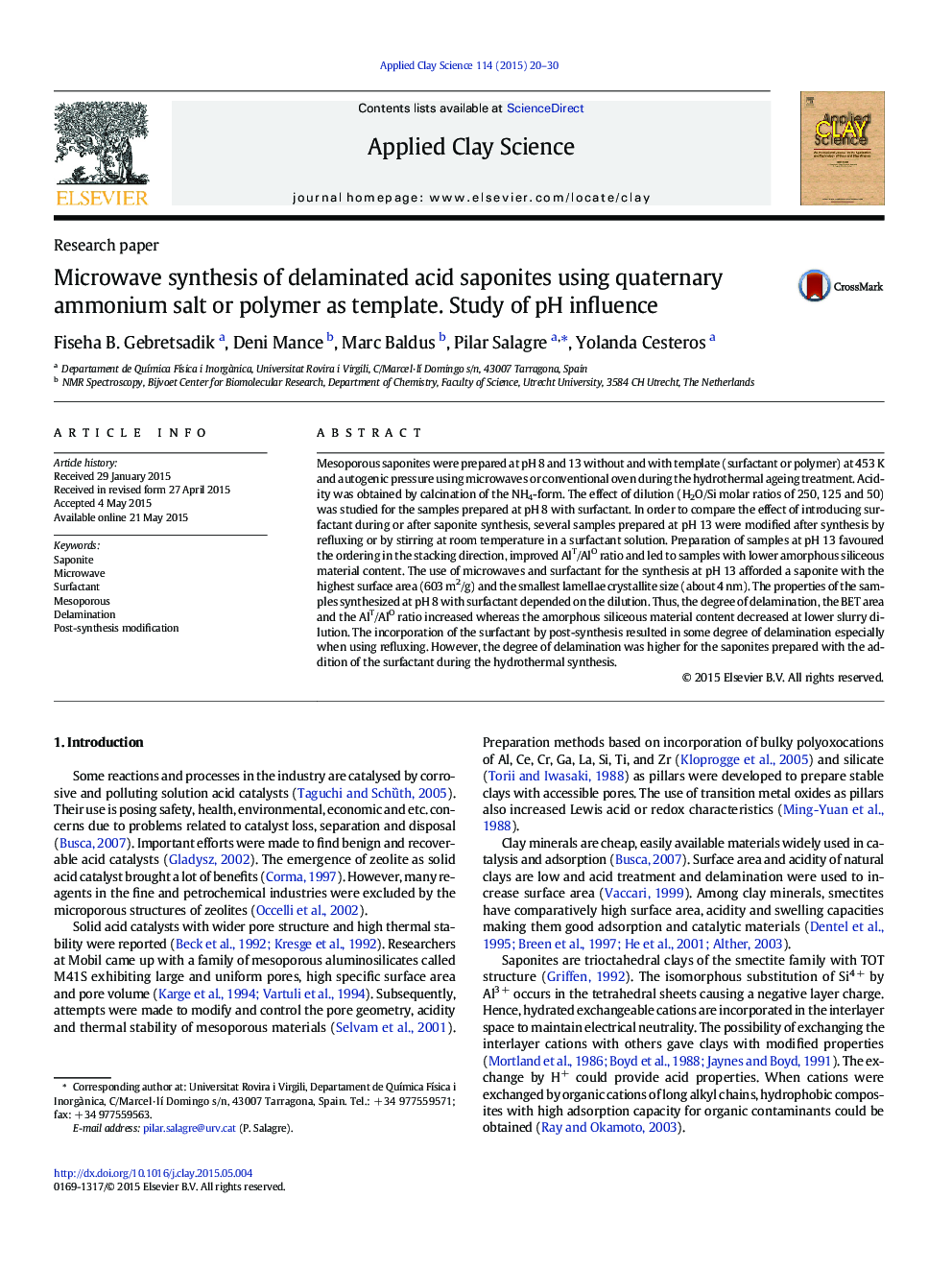| Article ID | Journal | Published Year | Pages | File Type |
|---|---|---|---|---|
| 1694349 | Applied Clay Science | 2015 | 11 Pages |
•Synthesis of delaminated saponites using microwave and templates•Surfactant is more effective than polymer for saponite delamination.•Highest area saponite was synthesized at pH 13 with microwaves and surfactant.•Low dilution and surfactant enhanced delamination in saponite synthesized at pH 8.•Post-synthesis modification with surfactant improved saponite delamination.
Mesoporous saponites were prepared at pH 8 and 13 without and with template (surfactant or polymer) at 453 K and autogenic pressure using microwaves or conventional oven during the hydrothermal ageing treatment. Acidity was obtained by calcination of the NH4-form. The effect of dilution (H2O/Si molar ratios of 250, 125 and 50) was studied for the samples prepared at pH 8 with surfactant. In order to compare the effect of introducing surfactant during or after saponite synthesis, several samples prepared at pH 13 were modified after synthesis by refluxing or by stirring at room temperature in a surfactant solution. Preparation of samples at pH 13 favoured the ordering in the stacking direction, improved AlT/AlO ratio and led to samples with lower amorphous siliceous material content. The use of microwaves and surfactant for the synthesis at pH 13 afforded a saponite with the highest surface area (603 m2/g) and the smallest lamellae crystallite size (about 4 nm). The properties of the samples synthesized at pH 8 with surfactant depended on the dilution. Thus, the degree of delamination, the BET area and the AlT/AlO ratio increased whereas the amorphous siliceous material content decreased at lower slurry dilution. The incorporation of the surfactant by post-synthesis resulted in some degree of delamination especially when using refluxing. However, the degree of delamination was higher for the saponites prepared with the addition of the surfactant during the hydrothermal synthesis.
Graphical abstractFigure optionsDownload full-size imageDownload as PowerPoint slide
